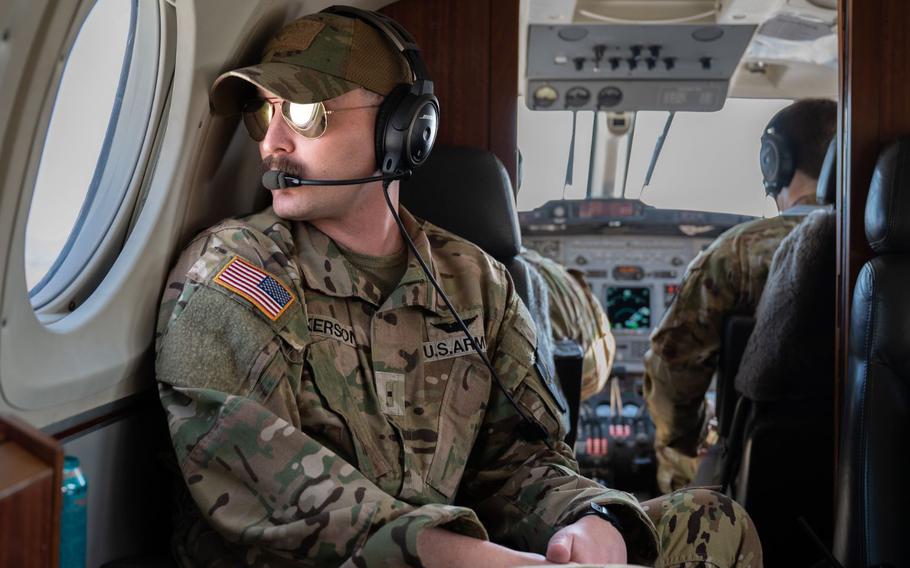Spotlight!
Osan 51st FW demonstrates ACE capabilities in ELS training
51st Fighter Wing Public Affairs March 26, 2024

U.S. Army Warrant Officer Corey Ackerson, E-52 Aviation Regiment pilot, looks out the window of a C-12 Huron at Namji, Republic of Korea, March 13, 2024. The plane transported Airmen assigned to the 51st Fighter Wing to an emergency landing strip during routine agile combat employment training. ACE enhances the operational capabilities of the 51st FW and its allies by enabling rapid aircraft deployment from dispersed locations, ensuring adaptability and resilience in dynamic and contested environments. (Photo by Senior Airman Brittany Russell)
OSAN AIR BASE, Republic of Korea -- U.S. Airmen assigned to the 51st Fighter Wing conducted joint and bilateral agile combat employment, or ACE, training using a public highway as an emergency landing strip in Namji, Republic of Korea, March 13, 2024.
A-10 Thunderbolt IIs assigned to the 25th Fighter Squadron, alongside U.S. Army E-52 Aviation Regiment, Republic of Korea Air Force 5th Air Mobility Wing, and ROKAF 6th Search and Rescue Group aircraft, carried out takeoffs and landings on the public highway, significantly boosting their preparedness for real-world contingency operations with highly realistic training scenarios.
The training exercised the 51st FW’s ACE capabilities, which enables rapid aircraft deployment and versatile operations from austere locations, ultimately enhancing the ability to respond effectively to dynamic mission requirements in contested environments.
“ACE is a way to minimize risk while maximizing sustainability,” said Tech. Sgt. James Samuel, 51st Operations Support Squadron air traffic control watch supervisor. “We can send small teams of Mission Ready Airmen anywhere, with any equipment. Those teams can operate as if they’re with an entire unit at home station, and keep aircraft operational from diverse locations.”
The 51st OSS, 8th OSS, and ROKAF 259th Special Mission Squadron were responsible for controlling aircraft throughout the training, demonstrating their capability to conduct airfield operations from any location.
Master Sgt. James King, 51st OSS air traffic control senior watch supervisor, spearheaded Osan’s portion of the training involvement and helped bring together joint and bilateral partners from throughout the pacific theater.
“The ROK is a really unique location where you have multiple spots like the Namji ELS that enable us to overwhelm our adversaries’ targeting capabilities,” said King. “It allows the 51st FW to conduct ACE operations with our allies and stay ready to ‘Fight Tonight’ no matter the circumstances.”